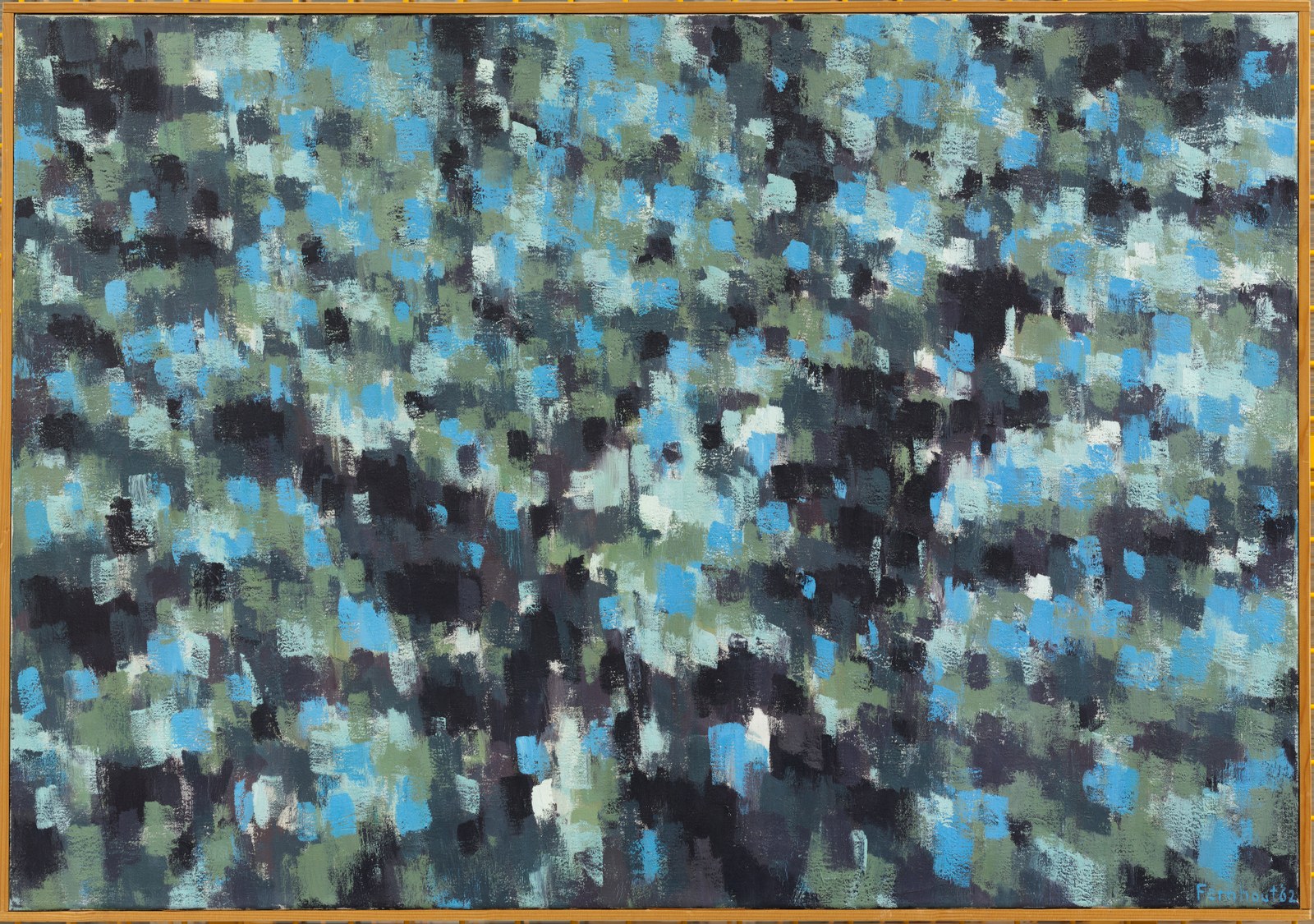Herfst

Description
In the painting 'Autumn' by the Dutch artist Edgar Fernhout, the whole canvas is painted with brushstrokes of the same size. They have been painted in the same direction from top to bottom. In some places they have been painted close together or overlapping, sometimes in various layers. In other places pieces of unpainted canvas remain visible. The most important visual element in the work is colour, with alternating brushstrokes in different greens and blues, grey, black and white. As a result of the variation in the colour there are rhythms in the pattern of identical strokes.
Edgar Fernhout, the oldest son of Charley Toorop, originally painted in a very realistic way. Gradually he abandoned this. The death of his mother in 1955 was a turning point in his life and in his work. After 1957 no recognizable forms can be found on his canvases. Despite his wholly abstract way of painting, reality and especially nature continued to be the source of his inspiration. He said: ”I make a new image of what I see and I translate it into colour and rhythm.” However, for him concentrating on elementary images was not an end in itself but a means to an end.
Fernhout was a unique figure in Dutch post-war art. As regards his working methods and subjects, his work reveals similarities to that of artists of the École de Paris, such as Bazaine, Bissière and Poliakoff. Certain themes such as the seasons constantly recur in Fernhout’s work. In this respect he said: “For me, painting is not a pictorial but a human problem: saying the same thing again and again but in a fuller, more intense way and being more involved in the world that you are representing.”
![[object Object]](/en/collection/damesportret/@@fallback-image/image/large)
![[object Object]](/en/collection/voor-vrij-nederland-vreemdelingendetentie-locatie-scheveningen-luchtplaats/@@fallback-image/image/large)
![[object Object]](/en/collection-research/library/publications/de-maaltijd-der-vrienden/@@fallback-image/image/large)
![[object Object]](/en/exhibitions/nederlandse-beeldende-kunst-uit-de-jaren-dertig/@@fallback-image/image/large)